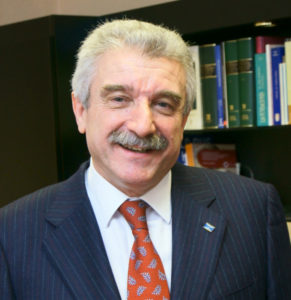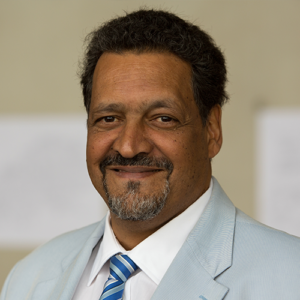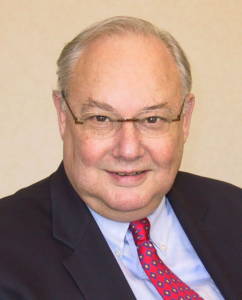‘I would not have dreamed in November ’89 that it would still be there 30 years later!’ Many would echo the sentiments of Raymond Georis, founding chair and moving spirit of the European Foundation Centre (EFC). But not only is the EFC still there, but today it operates at the centre of the landscape of institutional philanthropy in Europe. Through the eyes of some of those closely concerned with the EFC, Alliance looks at its achievements, the challenges it has faced and the roles it might play in the coming years.[1]

Miguel Angel Cabra de Luna, Director of Alliances, Social and International Relations, Fundación ONCE and a former member of the EFC’s governing council.
The coincidence of the EFC’s founding with the fall of the Berlin Wall – Raymond Georis recollects that its initial meeting took place on the same day the Wall fell, triggering the wholesale abandonment of communism by many of the countries of Central and Eastern Europe (CEE) – decisively shaped its character, in two ways. The first was that in addition to becoming a meeting place for the then nascent European foundation sector, as Miguel Angel Cabra de Luna observes[2], a significant part of its early purpose was devoted to supporting civil society in CEE to create more democratic institutions. Second, as both Georis and Barry Gaberman, former vice-president at the Ford Foundation, note, this development was significant in bringing in US support for the new entity. ‘At that time,’ says Barry Gaberman, ‘the Ford Foundation had made a commitment to work both in Russia and in Eastern and Central Europe…It seemed that the EFC was a logical decision.’[3]. However, he notes, it was the Mott Foundation that really took the lead in supporting the new organisation, and in particular, it was at the initiative of the late Bill White. Raymond Georis also acknowledges this: ‘Bill White was very important. He was the one who provided the seed money so we could immediately embark on the Central and East European programme.’ Bill White was always a champion of infrastructure, and there was an added personal dimension. At one of the first meetings of the EFC in Warsaw, White met John Richardson, with whom he formed a close friendship, which formed one of the bases for Mott’s continuing support for EFC.
Much of the EFC’s attention continued to be focussed on Central and Eastern Europe in the first decade and beyond of its existence. In 1991, for example, it launched the New Europe programme to support and foster new foundations and civil society infrastructure in CEE. In the following year, an interest group of members was formed which eventually became the Grantmakers East Forum. Its attention has since moved, perhaps as current CEO Gerry Salole believes, prematurely, given recent events in the region but its eastward orientation continues to this day.
Aims and their development
So how was the EFC’s core purpose seen initially? Raymond Georis notes the intention ‘to create something on the model of the US Foundation Center, now known as Candid, which was more of an information centre.’ It has also had a central role both in drawing attention to what was at the time a sector in relative infancy and to fostering its growth. For thus providing a public face for the European foundation sector, he credits John Richardson, appointed the first director of the new body; ‘he was really the one who transformed the EFC towards what it has become today, a huge platform for foundation training, contacts, civil society, links between business, governments, etc and of course the European Commission.’ Francis Charhon, director general of the Fondation de France and former president of the EFC, underlines this leap forward from almost a standing start. When EFC started, he says, there were relatively few foundations in Europe outside Germany and the UK, ‘so it was important to show the importance of foundations in society and how the foundation presence could be increased.’
The very fact of its existence as a forum where European foundations can exchange knowledge and experience and recognise each other as similar entities across borders has contributed to a sense of solidarity among European foundations
‘Convening, network creation, the development of relationships between key players in different institutions’ – all that is the bread and butter of membership organisations, notes Gerry Salole. In addition, he observes that, ‘the vast majority of national associations were helped by us, we helped seed them, we helped grow them,’ because there was an understanding that you needed both national associations and a pan-European one.
As time has gone on, the aims and purpose of the EFC have been modified, not only in response to changing circumstances – the move away from CEE is an obvious example of this – but also because the relationships it has helped to create have, in return, enriched it with their own demands and experience. It has, for instance, developed loci for the exchange of expertise in its peer-learning exchanges and its thematic networks. Miguel Angel Cabra de Luna notes the importance of ‘joint programmes and networks’, such as the Disability Thematic Network, which he founded and of which he is still chair.
EFC and the sector’s growing maturity
Gerry Salole sees the biggest change – at least partly wrought by the EFC – as ‘the sense of self-confidence of European foundations. ‘When I first came, it used to be that practically every conversation would begin with an apology that they weren’t quite like American foundations.’ Now, he says, ‘there is no apology for being different, for having good relationships with local governments, for working cheek by jowl with European institutions.’
Diversity
Its significance lies not only in what it does, but in how it behaves. Not only the operation, but the character of the EFC has changed since the early days. Once seen as a sort of ‘white man’s club’ for those from Western and Southern Europe and Scandinavia, long-serving EFC board member and current vice-chair, Sara Llewellin of the UK’s Barrow Cadbury Trust remarks that ‘the diversity push-out has been in relation to all of those things and that’s a significant transformation in the 10 years I’ve been involved.’ Gerry Salole confirms this: ‘about 50 per cent of our governing council is female, and over 50 per cent of the management committee, so that’s really changed.’
Moreover, it’s not just the numbers that have changed, says Sara Llewellin, ‘but the perception of seniority and of respect is higher of our colleagues from other places.’
‘To have created a landscape of foundations in Europe’
Barry Gaberman sees the improvement of the content of its offering, both meetings and networks, as one of the most significant achievements of the EFC’s thirty years. Much of the credit for this, he believes, goes to Gerry Salole, who took over as CEO in 2005. ‘One of the things that I think Gerry did was professionalise the EFC in terms of the content of its meetings – plenary sessions, breakout sessions were more content-rich after he took over.’ Alongside this, he cites ‘the fact that it is now predominantly funded from European sources, (although others demur, as we’ll see) and ‘the way it has been able to integrate philanthropic groups from an ever increasing number of countries,’ including what he refers to as the ‘Italian surprise’ – the clutch of wealthy banking foundations which came into being following the Amato Law. Like most other respondents, he feels that the very fact of reaching 30 is in itself a significant achievement.
Raymond Georis thinks that ‘the achievement of ….proving that foundations have a role at the European level – has been the main success. That was something that nobody believed in.’ Foundations, he argues, have become ‘a political actor in Europe, not only in Europe, but in the world.’ Again, he credits John Richardson.
For Francis Charhon, EFC’s main achievement ‘has been to gather people from very different countries to talk together, to increase their consciousness of each other’s work, to have the capacity to do projects together.’ To this, he adds, ‘to have created the landscape of foundations in Europe, to have launched a certain amount of research, to have worked on some international projects.’
The perspective of individual nation states is still a high hurdle to get over in terms of thinking of a European identity to philanthropy
‘The most important thing the EFC did,’ thinks Gerry Salole, ‘was to create trust and knowledge and unofficial benchmarks so that foundations could relate to one another…they’ve upped their game, but done so confronting each other and understanding better how each other works.’ In connection with the increased trust, he notes the recent gesture by the Korber Stiftung ‘They’re giving us their share of Philanthropy House which is worth about €1.5m … that’s a very generous gesture on their part and I think it speaks volumes about the trust that exists now in the European foundation sector.’
He also believes that ‘the way in which we do peer learning has come into its own…you’re treating practitioners as people with prior knowledge, not as people who need to have academics come and tell them what to do.’ And while he would not claim that the EFC is solely responsible, Salole also notes the European foundation sector works with greater efficiency and confidence: ‘the speed at which new tools are being picked up and the mixing and matching of different tools…the importance of operational work alongside grantmaking, the use of assets in a different way – aligning your investments with your mission, and so on – all of that, I think, speaks to a maturing sector.’
Influence
The question of the influence EFC has wielded over all these things raises the perennial – and ultimately unanswerable – question of philanthropic endeavour, of how far any change can be attributed to this or that body or intervention. ‘Most of the very significant – by size – foundations are in it,’ says Sara Llewellin, ‘but still, it’s a relatively small number and I don’t have a sense of how influential that is beyond the EFC…it’s a resource centre, all of the stuff generated flows out as well, particularly through DAFNE, but what the impact of all that is on the ground…across so many different countries who are such developmentally different stages on this journey.’ She is surely right in preferring the notion of contribution, rather than attribution, when it comes to assessing the influence of the EFC outside its immediate sphere. Undoubtedly, the general climate of opinion has changed during the EFC’s lifespan. On the other hand, it would be perverse to ignore the work it has done in fostering and exemplifying change. Moreover, at least some of the credit for the maturing of the European foundation sector should go to EFC. The very fact of its existence as a forum – leaving aside the shortcomings or the merits of its own programmes – where European foundations can exchange knowledge and experience and recognise each other as similar entities across borders and organisational types has contributed to a sense of solidarity among European foundations and the growth of a self-conscious foundation sector.
Agency and funding
However, the part played by American foundations in financing the EFC has proved a long-standing source of debate and, for some, of disquiet. Barry Gaberman remarks that the willingness of Mott and Ford to provide financial support led to ‘an unhealthy imbalance in that you had the EFC and a cornerstone of its funding was coming from two US foundations.’ On his appointment as CEO, Gerry Salole was determined to change this: ‘it was absurd that European foundations can’t pick up the cost of their own association,’ a determination which Barry Gaberman applauds, describing it as a ‘pivotal moment when European foundations stepped in to provide the lion’s share of the funding for EFC.’
The lion’s share but not the whole thing…Sara Llewellin believes that the question is still a live one. US funding, diminished, though it still remains. ‘It is a weakness of ownership that we are still being bankrolled by three of the biggest US foundations. It’s nowhere as significant as it was, but it is still a significant contribution.’ Moreover, not only does it perpetuate a dependency, it’s an obstacle to the growing maturity and autonomy of the organisation: ‘ownership gives you more agency.’
Even so, Gaberman feels the predominance of US funding did not affect the EFC’s way of working and that ‘while there might be discussions about leadership, about board relations, or about building membership, the reality was that they never tied their support to those sorts of things.’
There is also an internal aspect to the question of funding that Sara Llewellin feels is important, which is that the largest contributors tend to carry the most weight. There’s status involved in being on the governing council and there is what she calls ‘an unspoken money dimension to it…the people who want to be most active and therefore want to be on the governing council will make additional voluntary contributions of some substance – albeit candidates are properly elected by the membership – so it tends to be self-perpetuating that those people have the biggest say.’ There has been some attempt to mitigate this and, following a governance review, it was decided that ‘after three terms [on the governing council] people – and organisations – have to take a 3-year break’. However, the idea was sufficiently unpopular that it was abandoned after a year: ‘there is now a one-year break which, quite frankly, is two meetings,’ notes Llewellin.
Further challenges
Barry Gaberman believes that the diversity it represents, which in some ways is an advantage, can also be a source of conflict: ‘the perspective of individual nation states is still a high hurdle to get over in terms of thinking of a European identity to philanthropy…I’m struck by how much individual state identities still pose an obstacle to a more coherent European agenda.’
Collaboration, streamlining and merger
He also observes ‘a continuous push-and-pull’ in the attitudes of infrastructure bodies towards each other. ‘Some might say that the constant tension is productive, but I don’t see that ever going away.’ In fact, at the moment, the relationship between the European infrastructure organisations – the extent to which they work in concert or in conflict – is coming very much into the spotlight. The fact that the birthday meeting in Brussels celebrating the EFC’s anniversary coincides with the EVPA’s 2019 conference and the UK’s annual foundation member conference may suggest that co-ordination and collaboration between Europe’s major philanthropic infrastructure organisations is not as full as it might be.
Whatever role the EFC has played over the previous 30 years, what it does in the years going forward is likely to be at least equally significant.
Francis Charhon wonders in particular, how the two organisations EFC and DAFNE ‘can live together, what each should represent at the international level…it’s probably one of the big tasks for the future.’ Are there simply too many organisations? For Sara Llewellin, that’s not the right question to ask. ‘There’s waste in the system, I can’t see how anybody in their right mind would think there wasn’t but the opportunity is there. It’s not so much that there are too many necessarily, but we should all be pulling in the same direction, thinking of the resource as a resource for the end goals of us all.’

‘The most important thing the European Foundation Centre did, was to create trust and knowledge and unofficial benchmarks so that foundations could relate to one another…they’ve upped their game, but done so confronting each other and understanding better how each other works.’ Gerry Salole, EFC CEO.
Gerry Salole speaks of ‘the zeitgeist’ being towards a merger between DAFNE and EFC, of which he is in favour provided that it is well handled and the views of the different stakeholders are taken into account. His concern is over what he terms a ‘reductionist view’ where the two organisations are seen purely in terms of one or two roles they fulfil, without taking account of for instance, ‘the capacity building, peer learning, trust building mechanisms we [EFC] have in the thematic networks.’ Sara Llewellin also urges caution: ‘Mergers aren’t necessarily productive in the long run,’ she says, ‘if people are doing it in bad trust and bad faith. If we can all get round a table and agree – and really mean it – that it is worth going through the pain because the outcome is that charitable endeavour across Europe will improve as a result, then it’s worth the time.’
The statute and its consequences
No consideration of the EFC’s work can omit its part in development of, and advocacy for, a European Foundation Statute which was ultimately rejected by the European parliament. Many see this as a failure and for Raymond Georis at least, a definitive one: ‘probably now that time is over to have a statute that would allow philanthropy to have a Europe without borders.’ Gerry Salole is more sanguine. He always felt it ‘very unlikely that we would get 27 countries to agree completely on a law that would essentially encase in national law one form of a type of organisation that by its DNA has to be diverse.’ In fact, he feels that ‘we’re in a very good place now to go forward with some of it,’ he thinks. ‘It won’t be a statute. We talk less about foundations and we’re talking more about philanthropy…and about how do you make philanthropy take advantage of the common market, so to speak and I think that’s a much healthier conversation than talking about elitist institutions like foundations.’
Meantime, there is no question that in his mind that European political institutions now take foundations much more seriously. Again, he thinks this is not simply because of the work of the EFC, but is more to do with the maturing of the European foundation sector. ‘There is recognition that this is an important sector.’ As an instance of this, he cites the publication of the recent European Social and Economic Committee Opinion dedicated to philanthropy.
The future
Whatever role the EFC has played over the previous 30 years, what it does in the years going forward is likely to be at least equally significant. What are the challenges it will have to meet, both internally and externally, and how should it approach them?
Naturally, its core purpose will remain. The EFC should continue to ‘serve as a meeting point for European foundations,’ says Francis Charhon. ‘Continuing to drive up standards in accountability, strategy, transparency and diversity, skills, etc – all of that’s the core mission,’ says Sara Llewellin.
She also feels that ‘one of the things EFC does…which I think is really good, is assisting with the development of philanthropy elsewhere in the world, and that’s going to be more and more needed.’
She sees two other important roles for the EFC in future: one of them is ‘driving up policy influence in Brussels’ and providing ‘guidance for more positive influence at the national level.’
Keeping open the shrinking space
The second area identified by Llewellin, echoed by Barry Gaberman and others is the need to support those institutions that in the words of Gaberman are on ‘the edgier side of civil society, that do human rights and social justice and independent policy analysis.’ For him, an important task is continuing to foster the relations between the EFC and national associations ‘that will allow, whenever one place is under threat, a lot of international attention to be brought to bear.’
Francis Charhon also takes up this theme: ‘everywhere in Europe, we see shrinking space for civil society…Everywhere there is violence, hunger, populism is increasing ….I think the next years, this question of populism, it’s a very important question.’
There will now be more criticism, more scepticism and therefore foundations need to get their act together in terms of defending themselves
Gaberman foresees another major task for EFC in ‘helping to build domestic philanthropy, both individual and institutional – but especially individual.’ If you are a government with authoritarian tendencies, he remarks, ‘it is easier to single out the institutional giver and cow them or label it as an unwanted foreign influence but when you have thousands of people giving small amounts of money it’s much harder to cow them. I think the underdeveloped nature of individual giving in regions like CEE is something that’s really important to work on.’
Raymond Georis notes ‘a lot of citizen action going on and that’s perhaps where foundations could play a role in those big problems like climate change and so on, but also in European problems like migration. Citizens have a role to play and foundations could perhaps support and encourage that.’
Gerry Salole sees a key function for EFC in representing the foundation sector and leading its move towards greater accountability and a greater degree of engagement with society at large: ‘The assumption that foundations…were likely to do good and didn’t need too much interrogation has gone. There will now be more criticism, more scepticism and therefore foundations need to get their act together in terms of defending themselves and…you need to do that in concert with others. You can’t defend an institution that’s so diverse in its diversity, you have to defend it at its core and that’s what we represent…we have our job cut out for us.’
Facing the future
There is also an internal dimension to the challenges ahead. ‘It’s a success story,’ notes Raymond Georis, ‘but there’s always the risk, with success, of just falling into a routine…you have to renew them if you want them to carry on being effective. And for me, for EFC to renew itself, would mean its becoming more involved in advocacy, advocacy not only for European values but for European integration.’
Francis Charhon feels that ‘now is the time to give serious consideration to the future and to creating new impetus in the EFC – younger people are thinking differently, digital technology has changed things.’ He is optimistic that the necessary reorientation is underway, citing the topics of this year’s AGA: ‘they were more global than they were before and show that the EFC is thinking differently about foundations’ role and EFC’s role. Even in our countries, we have to reinvent the project of philanthropy because…if we do business as usual, nothing will happen.’
Thirty years of the European Foundation Centre to anchor our sector is worth celebrating. It has provided a focus, stimulus and means of expression for European philanthropy.
In this connection, the EFC is approaching a key moment – the coming departure of Gerry Salole after 15 years as CEO. Change of leadership is always a potential crisis point in the life of an organisation but ‘it’s an opportunity as well as threat when a new CEO comes in with a different pair of eyes,’ notes Sara Llewellin. ‘The ability of that new CEO to introduce change and at the same time, build on the strengths of the EFC will do much to determine its effectiveness in the next decade,’ ahe adds.
The European project
Is there also for the EFC in helping to maintain a common European identity at a time when it sees to be fragmenting? Perhaps, but ‘not working with the elitist groups, politicians and parliamentarians, but using more, as we did in Eastern Europe, using more citizens associations and pressure groups,’ feels Raymond Georis.
Sara Llewellin also notes a role in fostering a European identity. ‘EFC has had a strong presumption of the European project all along… obviously that’s not primarily about philanthropy – but I think that as a contribution, the EFC does work hard to keep that flame alive.’
Thirty years of the European Foundation Centre to anchor our sector is worth celebrating. It has provided a focus, stimulus and means of expression for European philanthropy. It has helped to develop the expertise of European foundations and has been instrumental in providing them with a sense of common identity. As EFC heads towards a change of leadership and a possible redefinition of its relationship with Europe’s other infrastructure bodies, the ground is shifting under all of us. As it turns 30, it will surely be just as important for the EFC to look forward to its role in building a better European society as we head to the second half of this 21st century as it is to look back to its origins in 1989.
Andrew Milner is associate editor of Alliance and a long-time observer of European philanthropy
Footnotes
- ^ The founding and development of the EFC is a story in itself. This is not the place to tell it, nor is it within the scope of this article to consider in detail its programmes. A short chronology of main events is included, but those seeking more information are directed to the book, Laying the Foundations: 20 Years of the EFC, or to the EFC website: www.efc.be.
- ^ Miguel Angel Cabra de Luna is Director of Alliances, Social and International Relations, Fundación ONCE and a former member of the EFC’s governing council.
- ^ Though Ford was an early funder of the European Foundation Centre and continues to fund it, Barry Gaberman credits the Mott Foundation – and in particularly Bill White – for being the prime mover in supporting the EFC.










Comments (0)